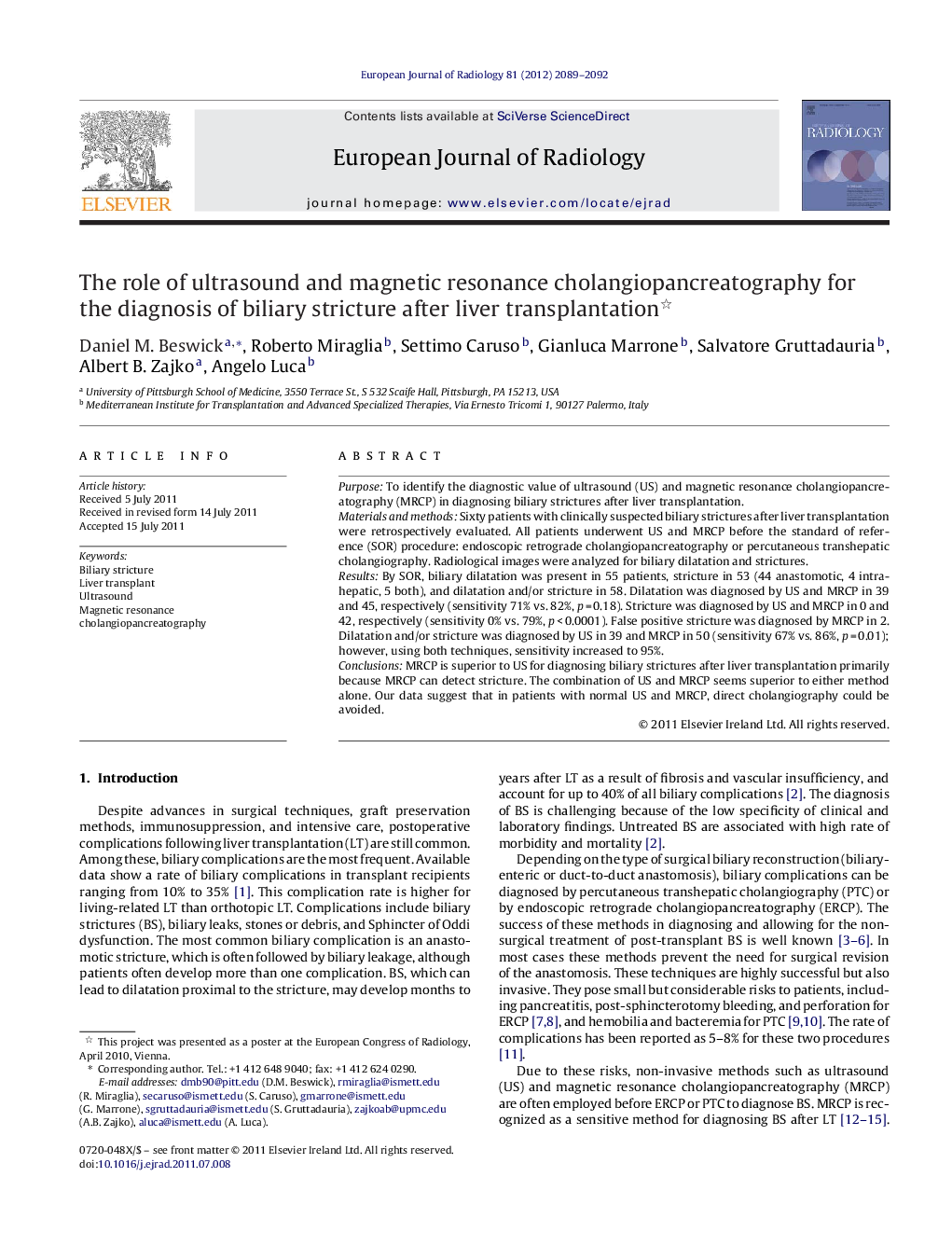| Article ID | Journal | Published Year | Pages | File Type |
|---|---|---|---|---|
| 6243784 | European Journal of Radiology | 2012 | 4 Pages |
PurposeTo identify the diagnostic value of ultrasound (US) and magnetic resonance cholangiopancreatography (MRCP) in diagnosing biliary strictures after liver transplantation.Materials and methodsSixty patients with clinically suspected biliary strictures after liver transplantation were retrospectively evaluated. All patients underwent US and MRCP before the standard of reference (SOR) procedure: endoscopic retrograde cholangiopancreatography or percutaneous transhepatic cholangiography. Radiological images were analyzed for biliary dilatation and strictures.ResultsBy SOR, biliary dilatation was present in 55 patients, stricture in 53 (44 anastomotic, 4 intrahepatic, 5 both), and dilatation and/or stricture in 58. Dilatation was diagnosed by US and MRCP in 39 and 45, respectively (sensitivity 71% vs. 82%, p = 0.18). Stricture was diagnosed by US and MRCP in 0 and 42, respectively (sensitivity 0% vs. 79%, p < 0.0001). False positive stricture was diagnosed by MRCP in 2. Dilatation and/or stricture was diagnosed by US in 39 and MRCP in 50 (sensitivity 67% vs. 86%, p = 0.01); however, using both techniques, sensitivity increased to 95%.ConclusionsMRCP is superior to US for diagnosing biliary strictures after liver transplantation primarily because MRCP can detect stricture. The combination of US and MRCP seems superior to either method alone. Our data suggest that in patients with normal US and MRCP, direct cholangiography could be avoided.
